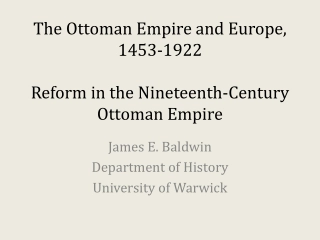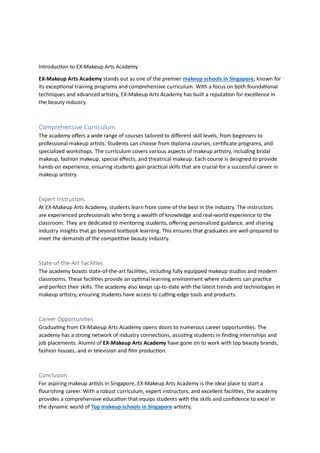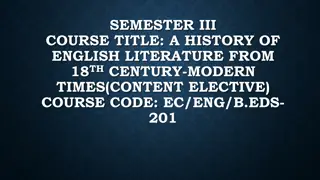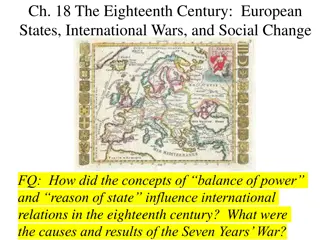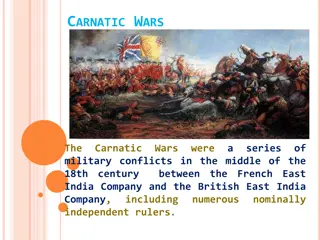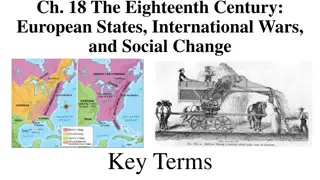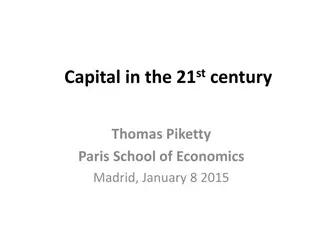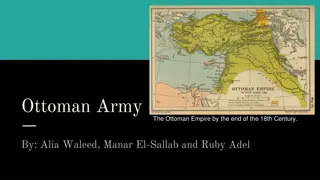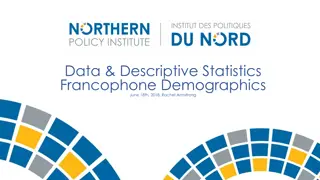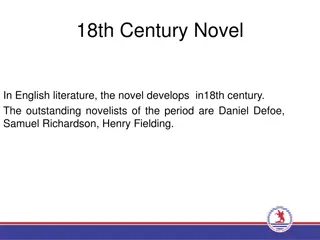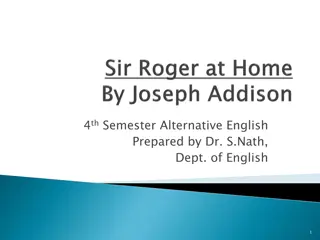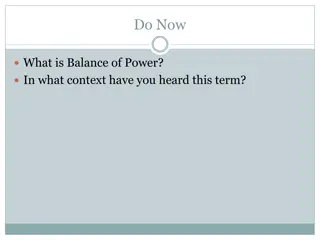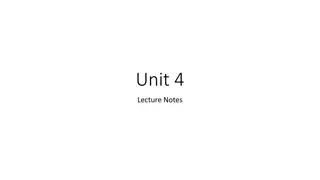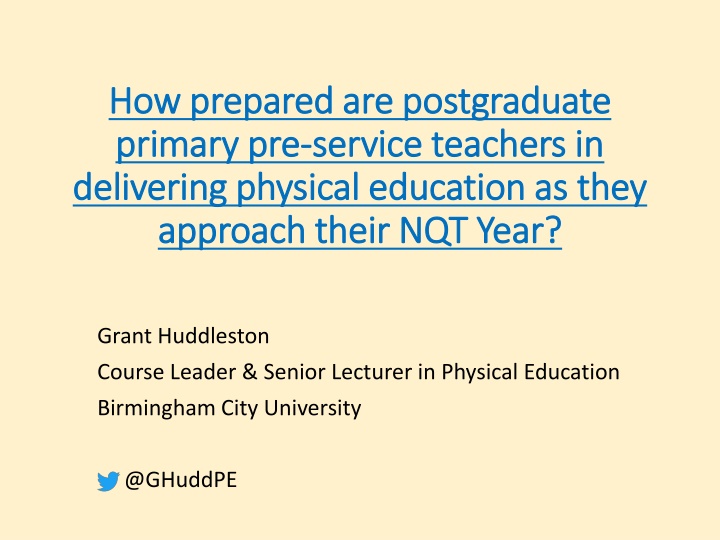
Preparedness of Postgraduate Primary Pre-Service Teachers in Delivering Physical Education
Explore how postgraduate primary pre-service teachers approach their NQT year in delivering physical education, focusing on indicators like high-quality PE delivery and support for engaging all pupils. The study delves into key terminology, rationale, and research questions regarding the teachers' experiences and preparedness to teach PE effectively.
Download Presentation

Please find below an Image/Link to download the presentation.
The content on the website is provided AS IS for your information and personal use only. It may not be sold, licensed, or shared on other websites without obtaining consent from the author. If you encounter any issues during the download, it is possible that the publisher has removed the file from their server.
You are allowed to download the files provided on this website for personal or commercial use, subject to the condition that they are used lawfully. All files are the property of their respective owners.
The content on the website is provided AS IS for your information and personal use only. It may not be sold, licensed, or shared on other websites without obtaining consent from the author.
E N D
Presentation Transcript
How prepared are postgraduate How prepared are postgraduate primary pre primary pre- -service teachers in service teachers in delivering physical education as they delivering physical education as they approach their NQT Year approach their NQT Year? ? Grant Huddleston Course Leader & Senior Lecturer in Physical Education Birmingham City University @GHuddPE
PE TeachMeet: PE TeachMeet: Performance Indicators Alignment Performance Indicators Alignment 1. Delivery of high quality PE that is effective and enjoyable by all pupils. 2. Delivery of high quality PE that engages the least active pupils. 3. Supporting Primaries to make best use of their PE and Sport Premium funding 4. Effecting change through PE Subject Leadership support, guidance and advice for PE subject leads 5. Individual Sport/Activity specific CPD sessions e.g UKS2 Dance, KS1 Gymnastics
Key Terminology Key Terminology - - Explained Explained Primary Pre-Service Teacher (PPST) = a trainee primary teacher AOTT = an Adult Other Than the Teacher ITE = Initial Teacher Education Generalist = a teacher who is teaching all subject areas across the primary curriculum Specialist and Co-Ordinator will be discussed later
Rationale (1/2) Rationale (1/2) 1. Discussions with trainees prior to 2019: complaining about not feeling prepared not having opportunities on placement 2. Observations of what is taking place in primary schools in person or on social media 3. Prior literature on the landscape of primary PE and particularly the affect of the PE and school sport (PESS) premium https://www.quotemaster.org/city+and+village
Rationale (2/2) Rationale (2/2) Key Research Questions 1. What experiences of PE are PPSTs receiving once they complete ITE? 2. What impact is outsourcing, staffing and funding having on the PPSTs placement experience? 3. How prepared do PPSTs (on either route) feel about teaching PE effectively once they finish ITE? 4. What CPD needs to PPSTs have as they complete ITE? Therefore, what action can be taken to rectify any issues surrounding the preparation of PPSTs in teaching PE?
Reviewing the Literature Reviewing the Literature Traditions of primary PE Generally promotes the topic/thematic approach Generalist teachers to deliver all aspects of the NC Jess, McEvilly and Carse (2016) stated that 6% of primary school teachers are specialists in PE. Back to the 1990 HMI study 30% of lessons in primary were taught as single subjects. It s unclear what the current data shows.
Reviewing the Literature Reviewing the Literature Why begin a career in primary education? Look at Lortie s (1975) themes. Two key themes jump out: 1. Continuation theme (continue their love of a subject towards teaching) 2. Interpersonal theme (a career based on supporting others) Based on trainee s institutional biographies many can hold negative views of PE. Eg. (Jess, McEvilly and Carse, 2016) 39% considered PE to be of limited to very limited importance
Reviewing the Literature Reviewing the Literature Landscape of ITE Generalist PPST s receive anything up to 12hrs of PE specific training (Kirk, 2012) PPST s can often choose an additional PE module if they wish. Ardzejewska et al (2010) argued that the core subjects of English and maths become the focus of the generalist teacher.
Reviewing the Literature Reviewing the Literature Being prepared and subject knowledge Being ready and able to satisfy the teacher standards. Note that the PE NC is both vague and wide. Develop both content knowledge and pedagogical knowledge (PCK)
Reviewing the Literature Reviewing the Literature So what are specialists and co-ordinators? The literature and based on ad-hoc discussion define these in many different ways. Therefore, for the purpose of this study: A specialist is a teacher (with QTS) who has received specific primary PE training (through either additional CPD or in ITE) And A co-ordinator is a teacher (with QTS) who has responsibility for the management of PE in their school NB: A co-ordinator is not always a specialist.
Reviewing the Literature Reviewing the Literature Who is currently teaching PE in English primary schools? Three main providers: 1. Generalist Teacher 2. Specialist PE Teacher 3. AOTTs (in most cases, coaches and in some cases, a teaching assistant) The ratio of the above has altered significantly since 2013. Large workforce shift towards non-QTS delivery 33% without QTS in a 2016 study
Reviewing the Literature Reviewing the Literature Confidence and competence of teaching staff Varied and hugely contextual to the school. This has catalysed the promotion for outsourcing the delivery of PE. How much is PE valued in the school is a significant factor. Very limited research exists on the benefit of employing coaches in place of teachers
Reviewing the Literature Reviewing the Literature Using coaches Generally high levels of subject content knowledge and motivation. Can support subject knowledge and inspire low C+C teaching staff Don t often have an education background or promote sporting goals over education goals. Their knowledge of the NC and pupils has also raised questions. What is their impact to new training teachers on placement?
Methodology Methodology Ethical clearance gained in Feb 2020, with data collection between May July 2020. Covid-19 pandemic estimated that trainees completed circa 75 days in school. 48 participants on a primary ITE route completed the mixed methods questionnaire. From six university ITE courses from around England. Grounded theory utilised to make sense of the qualitative data.
Findings Findings The findings are broken down across four key themes, related to the research questions: 1. Experiences 2. Outsourcing 3. Preparedness 4. Continual Professional Development NPE denotes a non-PE pathway (generalist) whilst PE denotes a PE pathway. For coding purposes, the fourth PPST on the non-PE route has been coded NPE4 for example.
1. Findings 1. Findings - - Experiences Experiences PE Non-PE Average Teaching/Observing PE prior to the course Taught Observed Taught Observed Taught Observed 0 hours 1-5hrs 6-10hrs 11-15hrs 16hrs+ 55% 18% 5% 9% 14% 32% 27% 5% 9% 27% 54% 23% 0% 4% 19% 15% 50% 4% 0% 31% 54% 21% 2% 6% 16% 24% 39% 4% 5% 29% Prior to starting the course, the majority hadn t taught PE, whilst most had observed some PE.
1. Findings 1. Findings - - Experiences Experiences Teaching/Observing PE on Completion of the course PE Non-PE Average Taught 18% 36% 27% 5% Observed 0% 55% 27% 9% Taught 15% 62% 4% 15% Observed 4% 58% 15% 15% Taught 17% 49% 16% 10% Observed 2% 56% 21% 12% 0 hours 1-5hrs 6-10hrs 11-15hrs On completion of their course: 83% had taught PE, with the mean (49%) having taught 1-5hrs of PE 98% had observed PE, with the mean (56%) having taught 1-5hrs of PE * Error deviation of 1%
2 2. Findings . Findings - - Outsourcing Outsourcing Not Beneficial to Pupils Not Beneficial to Teachers I don't have an opinion on the matter Beneficial to Pupils Beneficial to Teachers 0% 10% 20% 30% 40% 50% 60% 70% 80% Non-PE PE Just over 70% of PPSTs said that using coaches were beneficial to pupils. The benefit to teachers was less defined, with 50% saying yes, whilst 38% said they weren t beneficial.
2 2. Findings . Findings Outsourcing (responses) Outsourcing (responses) Coach and teacher to share lessons Better to have a coach due to health problems Standard of teaching PE would drop without Pupil enjoyment / engagement Coaches don't know the pupils as well Prevents development of the teacher Teacher observing the coach is beneficial Teacher Time used for (eg) PPA Coach as an Expert 0% 5% 10% 15% 20% 25% 30% 35% 40% 45% 50%
2 2. Findings . Findings Outsourcing (responses) Outsourcing (responses)
3. Findings 3. Findings Feelings of being prepared Feelings of being prepared 26 themed responses relating to how they perceived being prepared, with a Strong knowledge of PE being the mean result (44%). Your ability to use technology within PE Ability to use technology Your ability to assess in PE was the weakest area. Your ability to include/differentiate for ALL pupils in PE Ability to plan was Your ability to plan for PE the strongest Your understanding of PE pedagogies Your PE Subject Knowledge 0% 10% 20% 30% 40% 50% 60% 70% 80% 90% 100% Excellent/Good Satisfactory Poor/Very Poor
3. Findings 3. Findings Feelings of being prepared Feelings of being prepared Swimming * Fundamental Movement Skills Outdoor Adventurous Activities Gymnastics Athletics Dance Games 0% 10% 20% 30% 40% 50% 60% 70% 80% 90% 100% Excellent/Good Satisfactory Poor/Very Poor Swimming was the weakest area for feeling prepared to deliver. Games was by far the highest response for feeling prepared. Not gaining experience or opportunity in this area was the key response to explain any negative thoughts.
4 4. CPD . CPD Learning Technologies CPD Assessment CPD Inclusion/SEND CPD Planning CPD Pedagogy CPD Subject Knowledge CPD 0% 20% 40% 60% 80% 100% 120% Yes Maybe No Highest CPD need was noted against assessment in PE and learning technology Planning was the lowest need
4 4. CPD . CPD Important to note that a lot of responses must be reflected against the Dunning Kruger effect. Secondly, the responses here are through their eyes as a trainee.
4 4. CPD . CPD Likelihood of CPD through varying methods, broken down by Yes, No and Maybe 100% 90% 80% 70% 60% 50% 40% 30% 20% 10% 0% Observe other teachers/coaches in school Online videos, eg. Youtube Attend courses Wider reading Social Media, eg. Twitter Yes Maybe No Linear (Yes)
Findings Findings - - Summary Summary 1. Experiences: Prior to commencing a PGCE, the majority of PPSTs had taught zero hours of PE, but had observed 1-5 hours of PE. On completion of their PGCE, the majority of PPSTs had both taught and observed 1-5 hours of PE. 2. Outsourcing: The majority of PPSTs found the use of outsourced coaches to be a benefit to pupils; however, they had mixed feelings regarding the benefits to teachers. The stated benefits of using outsourced coaches were that they were the expert and created the production of PPA (preparation, planning and assessment) time.
Findings Findings - - Summary Summary 3. Preparedness : PPSTs stated that somebody who is prepared has strong knowledge and understanding of the subject. The generalist PPSTs recorded higher positive responses than the PE PPST regarding feelings of being prepared. The PPSTs ability to use technology within PE was rated as their lowest area of confidence. Activity areas that PPSTs stated they felt least confident to deliver were swimming, followed by dance and gymnastics, with a lack of experience (on placement or in ITE) being the defining factor. Games was the most confident activity area to teach.
Findings Findings - - Summary Summary 4. Continual Professional Development: The generalist PPSTs scored highest for needing CPD. Learning technology was found to be the largest CPD need that PPSTs wanted to develop once into their NQT year. There was a clear relationship between the methods of CPD and the take up from the PPSTs; observing other teachers/coaches was determined as the most likely method of CPD in their NQT year, whilst engaging in social media was least likely.
What does this all mean? What does this all mean? Feelings of being prepared is mixed across PPSTs, but in general, the data shows that they experience limited opportunities at ITE and whilst on placement. Lots of research over the past 8yrs showing that the PESS premium has had a big impact on the workforce in schools, changing how prepared PPSTs are as they start their NQT year. What changes can be made in the short term? What changes are needed in the long term?
In the short term In the short term My recommendations are: 1. The delivery of PE to become the sole domain of the teacher with QTS, a recommendation specified in the APPG (2019) report, but not transpiring into the current day. 2. Schools to provide as many varied experiences in PE for the PPST whilst on placement. With the majority of PPSTs receiving between 1-5 hours, it is no wonder that not all feel very prepared for their NQT year. 3. Training to address PPST s use of technology and improve their TPACK. 4. Provide additional experiences during ITE around PE, including activity areas outside of games, namely swimming, gymnastics and dance.
The future of primary PE The future of primary PE Entirely specific and contextual to the school, its staff and its values. Consider the model of delivery: 1. How much and what input will AOTTs have? What is their impact? 2. How successful is the generalist + co-ordinator model? 3. Does a specialist model work better? Will PE continue to be 2hrs (roughly) a week? What are its aims?
Delivery Model A Delivery Model A Specialist 1 / 2 Generalist 1 AOTT1 + AOTT2 Physical activity / wellbeing initiatives promoted by all staff Physical Activity Extra curricular / school sport delivered by PE specialists and coaches only Extra-Curricular / School Sport Specialist 1 / 2 AOTT2 PE PE Delivered by PE specialist only. Specialist 1 / 2
Delivery Model B Delivery Model B Co-ordinator 1 Generalist 2 AOTT1 AOTT2 Physical activity / wellbeing initiatives promoted by all staff Physical Activity Extra curricular / school sport delivered by PE co- ordinator, generalists teaching staff, and/or coaches. Extra-Curricular / School Sport Co-ordinator 1 Generalist 2 AOTT2 PE PE Delivered by generalist teaching staff, supported by a PE co-ordinator. Co-ordinator 1 Generalist 2
Position Delivery Considerations, drawbacks, caveats Specialist PE Teacher Teaches All Primary PE only Understanding of pupils Possibility of losing Qualified Specialist 1 Has had Primary specific PE the personal touch with pupils? Teacher training Could looping help against this? Understanding of pupils Possibility of losing the personal touch with pupils? Qualified Teaching All Primary PE only Specialist 2 Could looping help against this? Trained Secondary PE teacher Teacher CPD required for primary education teaching and learning PE Co-Ordinator Teaches all subjects (generalist) Has had additional PE specific Co- Qualified ITE/School CPD training Teaching full time, across all subjects what Co-ordinates and responsible for level of specialisation is possible? Ordinator 1 Teacher up-skilling all staff delivering PESSPA
Position Delivery Considerations, drawbacks, caveats Generalist Teachers Takes PPA during PE Teaches all subjects De-Skilling in PE. Does this cut chances of Qualified Generalist 1 Does not teach PE employment in schools adopting a different Teacher model of PE delivery? Teaches all subjects Teaches PE with support from Specialist & AOTT2 Qualified Generalist 2 Teaches PE CPD likely required Teacher Adult Other Than the Teacher Has no / minimal PE Used to promote PA initiatives in and the rough Does not AOTT 1 training/experience. the school hold QTS Used to promote PA initiatives Holds some level of Helps promote/deliver extra-curricular / school PE/Sport/coaching sport Does not qualifications. AOTT 2 Can help upskill (through CPD/lesson delivery) hold QTS Has experience of delivering PE any staff member in specific areas they have / physical activity. higher levels of qualifications/experience.
The The F Full ull P Paper aper The full paper and the references list can be found here: https://www.pescholar.com/research/primary-pre-service-teachers-delivering-physical- education/
Thank you for listening Thank you for listening

![❤[PDF]⚡ Escaping from Eden: Does Genesis Teach that the Human Race was Created](/thumb/21697/pdf-escaping-from-eden-does-genesis-teach-that-the-human-race-was-created.jpg)
